ordering is as in Figure 2 except for the upper left graph where the response of the
money growth rate is displayed rather than the response of the technology shock.
Figure 5
Monetary Shock in the OLG Model
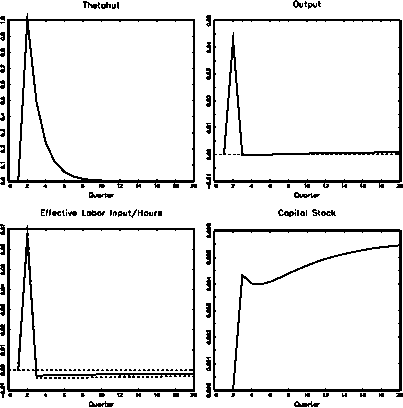
S
!
!
!
I
I
Consumption

Reoi b.o.ρ. Money Boionces
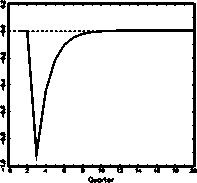
3
3
3
3
?
?

Inflation
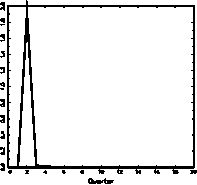
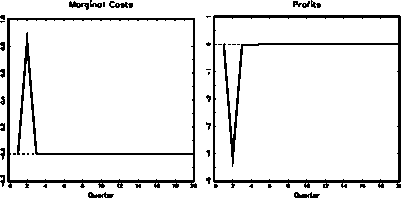
Real interest Rate
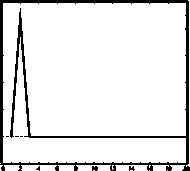
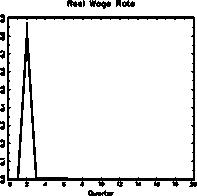
The percentage changes of output, hours and investment are small and only amount
to 0.04%, 0.07% and 0.24%, respectively. Inflation, the real interest rate, and wages all
increase. Notice that, in this sticky price model, we are unable to model the liquidity
effect that nominal interest rates decrease following an expansionary monetary policy.
In addition, profits decline. This is one of the major shortcoming of the sticky-price
model that has been documented in the literature.16
The impulses responses of the Gini coefficients of capital, money, wealth, and income
are displayed in Figure 5. As in the case of an expansionary technology shock, the
distribution of market income becomes more unequal. The labor supply of the more
productive households is more elastic with respect to the real wage. Therefore, the
wage income of those households increases by more than the wage income of the less
productive households. In addition, the latter gain less from the increased rental rate
16See, among others, Christiano, Eichenbaum, and Evans (1997).
21
More intriguing information
1. The name is absent2. CONSIDERATIONS CONCERNING THE ROLE OF ACCOUNTING AS INFORMATIONAL SYSTEM AND ASSISTANCE OF DECISION
3. Tariff Escalation and Invasive Species Risk
4. Problems of operationalizing the concept of a cost-of-living index
5. The Cost of Food Safety Technologies in the Meat and Poultry Industries.
6. Fertility in Developing Countries
7. Behavior-Based Early Language Development on a Humanoid Robot
8. Palkkaneuvottelut ja työmarkkinat Pohjoismaissa ja Euroopassa
9. Popular Conceptions of Nationhood in Old and New European
10. Monetary Policy News and Exchange Rate Responses: Do Only Surprises Matter?